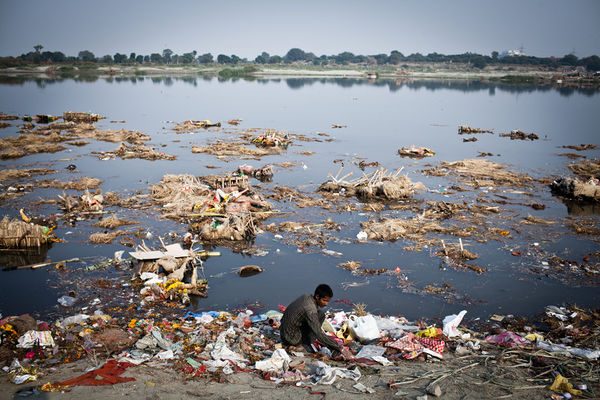Water Contamination: A Growing Epidemic: Difference between revisions
No edit summary |
|||
| Line 1: | Line 1: | ||
==Introduction== | ==Introduction== | ||
[[Image:15-Yamuna-pollution-IndiaInk-superJumbo.jpg|thumb|600px|right|The | [[Image:15-Yamuna-pollution-IndiaInk-superJumbo.jpg|thumb|600px|right|The longest and second largest tributary of India's sacred Ganges river, the Yamuna is a quintessential example of the high level of contamination in large bodies of water by untreated sewage in [http://india.blogs.nytimes.com/2013/03/15/government-pledges-to-clean-up-yamuna-river-again/ India.].]] | ||
<br>By [Name]<br> | <br>By [Name]<br> | ||
<br>At right is a sample image insertion. It works for any image uploaded anywhere to MicrobeWiki. The insertion code consists of: | <br>At right is a sample image insertion. It works for any image uploaded anywhere to MicrobeWiki. The insertion code consists of: | ||
Revision as of 19:38, 26 October 2015
Introduction

By [Name]
At right is a sample image insertion. It works for any image uploaded anywhere to MicrobeWiki. The insertion code consists of:
Double brackets: [[
Filename: Ebola_virus2.jpg
Thumbnail status: |thumb|
Pixel size: |600px|
Placement on page: |right|
Legend/credit: Electron micrograph of the Ebola Zaire virus. This was the first photo ever taken of the virus, on 10/13/1976. By Dr. F.A. Murphy, now at U.C. Davis, then at the CDC.
Closed double brackets: ]]
Other examples:
Bold
Italic
Subscript: H2O
Superscript: Fe3+
Introduce the topic of your paper. State your health service question, and explain the biomedical issues.
Section 1
Include some current research, with at least one figure showing data.
Section 2
Include some current research, with at least one figure showing data.
Section 3
Include some current research, with at least one figure showing data.
Conclusion
References
Authored for BIOL 291.00 Health Service and Biomedical Analysis, taught by Joan Slonczewski, 2016, Kenyon College.
